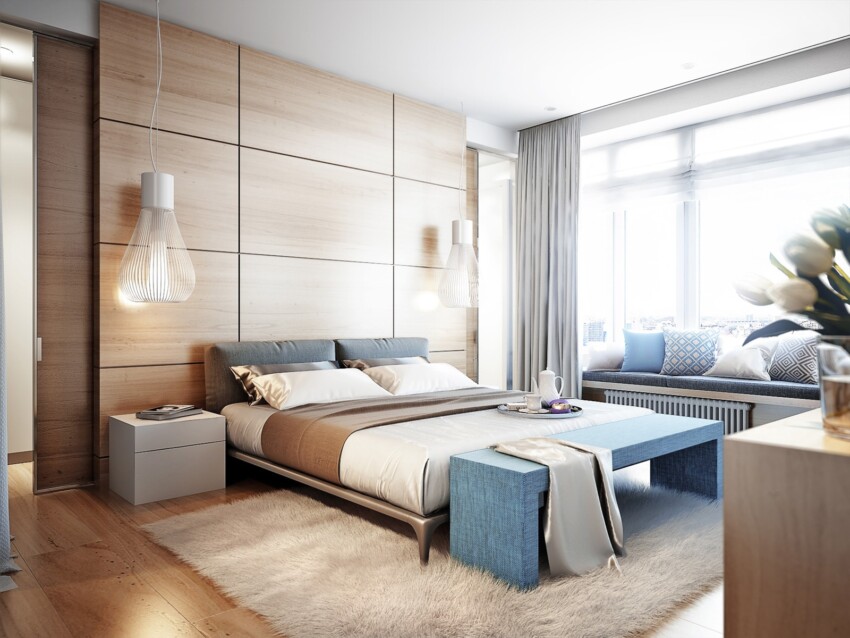

Venice is one of the most visited cities in the world, but thanks to an impressive number of hotels, b&b’s, flats and room rentals scattered throughout the historic centre, it accommodates millions of tourists every year.
Venice is also notoriously difficult to get around: built on water, it has no roads open to cars, so residents and tourists alike are forced to get around on foot or by vaporetto. Choosing where to stay is therefore more important than ever to avoid exhausting walks or exorbitantly expensive transport.
It is also good to choose carefully where to stay in Venice to avoid disappointment. Some say that the neighbourhoods of Venice all look alike, but this is not the case, each has its own history and its own particular atmosphere. Some areas are the height of romance, others are more lively, and still others are perfect for those coming to the city for a particular event.
Also pay attention to the distance of the hotel you want to book from the bus and train stations or car parks: you don’t want to find yourself crossing the city (and all its bridges!) dragging your suitcases? Watch out also for those ‘hotels in Venice’ that are actually located on the mainland: technically speaking they are not lying to you (and therefore you cannot ask for a refund), but they certainly offer something quite different from the hotels in the historic centre.
So how do you avoid getting ripped off and find a hotel in Venice in a beautiful area, perfect for the holiday you have dreamt of? Simple: just get informed!
Our guide to the best areas where to stay in Venice takes you on a discovery of the historic districts and the most beautiful hotels in each area: there is bound to be the right one for you. Book as soon as possible because Venice is taken by storm by tourists all year round!
The historic core of Venice is divided into six areas traditionally called ‘sestiere’. From west to east are Santa Croce, Cannaregio, Dorsoduro, San Marco and Castello; at the centre, in the heart of the city, is the sestiere of San Polo.
Each sestiere is located on one side or the other of the Grand Canal: there is no area that extends on both sides. These ‘districts’ also include the islands that form part of the historic core of Venice: Giudecca, San Giorgio Maggiore and San Michele.
Let’s take a look one by one at the pros and cons of sleeping in Venice’s historic sestieri. For each area we recommend the best hotels chosen on the basis of location, price and quality.
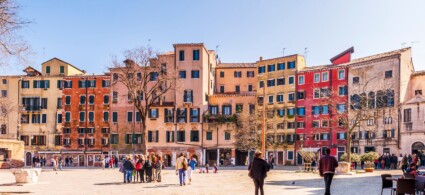
Cannaregio is the first sestiere in Venice you encounter when getting off the train: it is the largest and comprises two very different areas.
The main street that starts from Venice Santa Lucia railway station and the calli that branch off from there is, together with San Marco, the area of Venice with the highest concentration of tourists: sooner or later everyone passes through here. In this area you will find a wide choice of hotels and b&b’s, mostly mid-range, suitable for those staying in the city for a short time.
Sleeping in the station area is particularly recommended for those who want to reach their accommodation without taking a vaporetto.
Behind this noisy agglomeration of fixed-menu restaurants, shops, souvenir stalls and boarding houses is a world almost unknown to tourists where Venetians go about their daily business undisturbed.
It is a quiet and charming area, from which you can easily walk or take a vaporetto to the main tourist attractions. The amount of accommodation is less, but the choice of bars and restaurants (often of better quality than those on the main street) is very good.
Also part of Cannaregio is the very characteristic ghetto area.
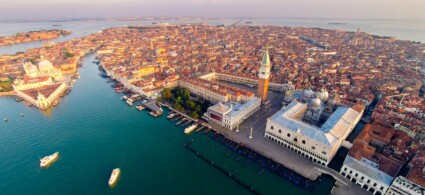
The name St. Mark is immediately associated with the famous square overlooked by the basilica of the same name and the Doge’s Palace, but in reality it also indicates an entire district.
The presence of the most popular attractions in this area makes St Mark’s hotels the most desired by tourists. They are also the most expensive, despite the presence of very different establishments (from family-run b&bs and pensions to super-luxury hotels); the same can be said of the bars and restaurants in the area. Moreover, the calli around the square are by far the most crowded.
If you are willing to accept these inconveniences, sleeping in St Mark’s allows you to stay in the heart of Venice and to be able to see the famous square and the beauty of the surroundings when the tourists have left or have yet to arrive.
The area is very easy to reach either on foot or by vaporetto.
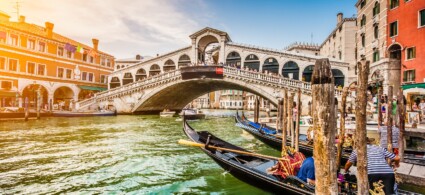
San Polo is the smallest of Venice’s sestieri and lies right in the middle of the historic centre, squeezed between San Marco, Dorsoduro, Cannaregio and Santa Croce.
It is a must-see point because it is home to a must-see attraction: the Rialto Bridge. Other sights in the area include the Scuola Grande di San Rocco and the Tintoretto museum, Campo San Polo, the Basilica dei Frari and Carlo Goldoni’s House. The fish market is also famous.
This is also a very touristy area, with all the pros and cons that this entails: choice of accommodation in all price ranges, tourist attractions within easy reach, bars, shops and restaurants in the area, crowded calli.
If you exclude hotels with canal views, San Polo is not a particularly expensive area. It is recommended for gourmet travellers due to the presence of many typical taverns.
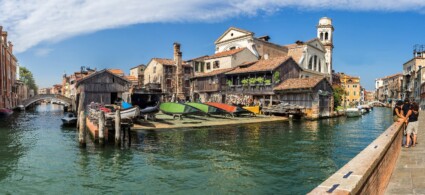
Dorsoduro is an area of Venice with a high concentration of museums and art galleries, including the famous Accademia Gallery, where you can admire Bellini’s masterpieces, and the Peggy Guggenheim Collection, the latter dedicated to modern and contemporary art.
It is a less touristy area than Cannaregio and San Marco but very lively, especially thanks to the presence of two university campuses (Ca’ Foscari and the IUAV) and the inevitable corollary of bars and clubs frequented by young people. The nerve centre of the student nightlife is Campo Santa Margherita, the ideal square for an aperitif with friends.
The choice of accommodation is very varied, with something to suit all budgets; San Marco is easily reached on foot or by vaporetto.
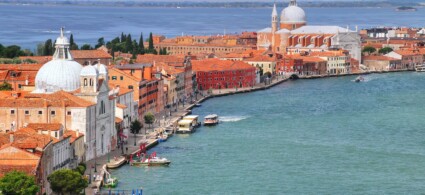
Although from an administrative point of view Giudecca is part of the Dorsoduro sestiere, this island is a world of its own. Very close to St Mark’s Square, so close as to have a beautiful view of the bell tower and the famous façade of the Doge’s Palace, it is generally snubbed by visitors because it lacks famous attractions and is off the main tourist circuits (it is not connected to other sestieri by bridges and can therefore only be reached by water).
It is a very quiet area, which is easier to get around than others because there is only one main street that runs along the bank of the wide Giudecca Canal; short calli (alleys), which are almost all blind alleys, start from here.
Giudecca is an ideal area for those who do not like chaos and want some respite from narrow, crowded calli and bridges that follow one after the other. The very few accommodation facilities on the island cover all price ranges: from a cheap hostel, perfect for low-cost travellers, to a luxury hotel.
The disadvantages of Giudecca are the limited services, with little choice of places to eat, and the need to take the vaporetto to get around. However, it must be said that the vaporettos are frequent, running until late in the evening, and there are more stops along the island’s main street.
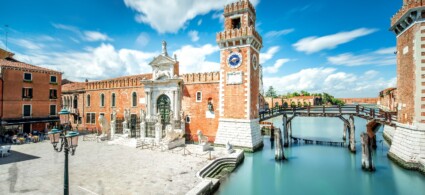
At the eastern end of the centre of Venice lies Castello, an area with a special charm recommended for lovers of art, green walks and maritime history.
It is one of the oldest parts of the city and the one most closely linked to the glorious maritime past of the Venetian Republic. It is home to the Arsenale, the naval museums and the Giardini della Biennale, a large green oasis open to the public and famous for being the exhibition venue for the Art and Architecture Biennale.
The advantage of staying in the Castello district is that hotel prices are on average lower than in tourist areas; it is also a relaxing area.
The disadvantage is its location at the far end of the centre. The sestiere is very large, so depending on where your accommodation is, you may or may not be able to reach St Mark’s comfortably on foot; the train station, as well as car parks, are very far away, so taking a vaporetto is recommended.

Santa Croce is somewhat the Cinderella of areas to sleep in the centre of Venice: devoid of interesting attractions, at the western end of the historic core, it is almost never considered. The number of tourist accommodations is much lower than in other central areas.
Do not discard it a priori, especially if you plan to arrive in Venice by car or bus: Piazzale Roma, the limit point beyond which road vehicles cannot continue, is within this zone. This means that once you leave your car in the car park or get off the bus you can quickly reach your hotel.
Santa Croce is also recommended for those seeking a quiet area with an authentic atmosphere.
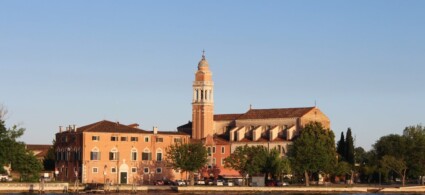
Sleeping on the Lido or other Venetian islands outside the centre is not a good idea if this is your first trip to Venice because their location will make you lose a lot of time travelling by vaporetto.
On the other hand, however, few tourists choose to sleep on the islands and this can be a source of fascination. The Venice Lido offers a good choice of hotels and b&b’s, almost all 3 stars or more, and allows you to combine cultural visits with some relaxation on the beach. It should be avoided during the film festival, as it fills up with people and hotel prices skyrocket.
Sleeping on Burano, Murano, Torcello or other islands is more difficult because tourist rooms are few and usually expensive.
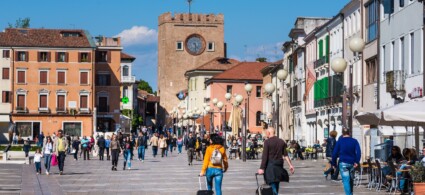
Mestre is not the Venice of postcards. Located on the mainland, this dynamic city is part of the municipality of Venice but the only thing in common between the two is this administrative tie. It is a business city, urbanised and always in a hurry, which will not remind you at all of the romantic city that the whole world envies us.
So why look for a hotel in Mestre? For many reasons, first and foremost its proximity to the centre of Venice. If you cannot find accommodation to your liking in the centre, you can sleep here and easily reach the centre by train or bus: connections are frequent and efficient. For the same price as a tiny room in the centre, you can find a large and bright room in Mestre.
Mestre is also recommended for those who arrive in Venice by car and want to avoid leaving it in the very expensive car parks of Piazzale Roma or Tronchetto: if this is your case, be careful to choose a hotel with free parking or with a pay car park that is not too expensive nearby.
Hotels in Mestre cater mainly to a clientele of business travellers and it is therefore easy to find modern 3-4 star establishments, including international chain hotels that guarantee high quality standards. At the opposite end of the spectrum, there are small pensions of dubious taste near the station: to be avoided.
Use the form below to check room availability and prices in real time.